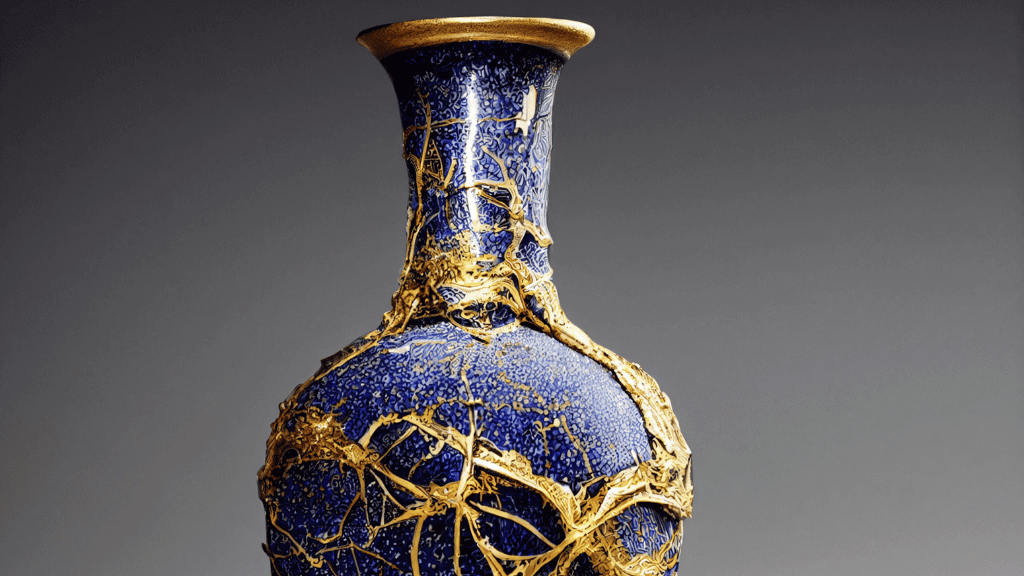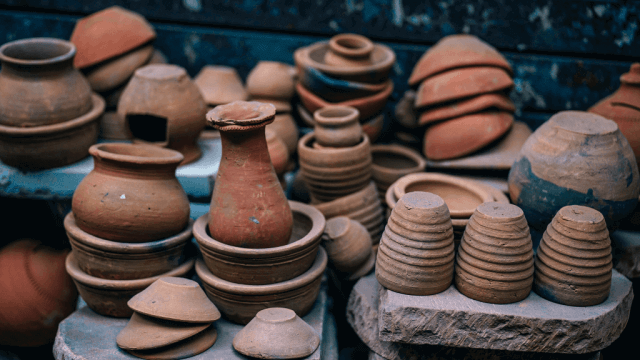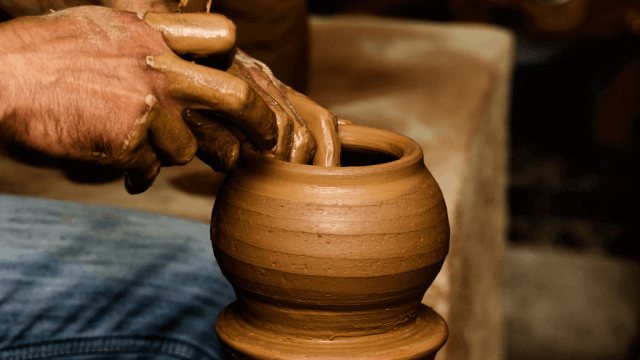Satsuma pottery is a type of Japanese earthenware characterized by detailed designs and intricate patterns.
Originating in the Satsuma province during the late 16th century, it is appreciated for its richly colored enamel glazes, ivory-like crackle texture, and gold accents.
The pottery typically showcases figures, landscapes, or floral motifs, and is highly valued by collectors worldwide.
An Introduction to Satsuma Pottery
Satsuma pottery is a form of Japanese earthenware renowned for its intricate designs, rich colors, and detailed craftsmanship.
It can be traced back to the late 16th century in the Satsuma province in present-day Kagoshima Prefecture.
This pottery has since become a symbol of Japanese art and culture, highly sought after by collectors worldwide.
Characteristics of Satsuma Pottery
Materials and Production
Satsuma pottery is made from pale-colored, low-fired earthenware clay, resulting in an ivory-like appearance.
After the initial firing, the pottery is coated with a translucent glaze to create the distinctive crackle pattern that Satsuma is known for.
Once the glaze is applied, the piece is fired at a lower temperature to create a smooth, glossy finish.
Design and Decoration
The most striking feature of Satsuma pottery is its detailed, colorful designs.
The extensive range of subjects depicted on these vessels includes human figures, landscapes, animals, and mythical creatures.
Floral motifs, such as chrysanthemums, peonies, and cherry blossoms, are also common.
Decorative elements, outlined in gold, serve to highlight the fine artistry of each piece.
Types of Satsuma Pottery
Kyoto Satsuma
Kyoto Satsuma, also known as Kyo-Satsuma, features lavish, multi-colored overglaze decoration with a high level of craftsmanship.
This type of Satsuma pottery is often associated with the famous Kyoto potter, Yabu Meizan, whose pieces are especially prized by collectors.
Gosu Blue
Gosu Blue Satsuma is a variation that uses a deep, dark blue pigment called Gosu as the primary color, often accompanied by gold and white details.
The blue color contrasts with the ivory ground, creating a striking visual effect.
This style was popular in the late 19th century and is considered rarer than other varieties.
Hirado Satsuma
Hirado Satsuma is characterized by its fine white porcelain body and the delicate use of blue underglaze painting.
These pieces exhibit a more restrained aesthetic compared to other types, emphasizing the elegant simplicity of the design.
Collecting and Appreciating Satsuma Pottery
As Satsuma pottery is highly valued for its beauty, historical significance, and fine craftsmanship, it has become a treasured collectible.
Identifying authentic pieces involves examining the quality of the work, the artistic details, and signature marks of the artist when present.
Appreciating and collecting Satsuma pottery is an enduring testament to the rich culture and history of Japanese ceramics.
Historical Development of Satsuma Pottery
The history of Satsuma pottery can be traced back to the late 16th century when Korean potters were brought to Japan during the invasion of Korea, which marked the beginning of the Satsuma style.
The potters set up kilns in the Satsuma province and began to experiment with local materials to create original, distinctive designs.
Satsuma pottery grew in popularity during the 19th century and internationally gained fame following its exhibit during the 1867 Paris International Exposition.
Signs of Authenticity
Maker’s Markings
One way to identify authentic Satsuma pottery is to look for the artist’s signature or markings.
These are typically found on the base of the work and may include Japanese characters, stylized motifs, or crests known as mons.
Keep in mind, however, that not all genuine pieces may have visible markings.
Quality and Craftsmanship
The craftsmanship of authentic Satsuma pottery is superior, marked by the skillful execution of designs with fine details.
These pieces exhibit a harmonious balance between design elements and the overall appearance of the pottery.
Beware of poorly painted or disproportionately sized elements, as these may indicate a lower quality work of art or a reproduction.
Caring for Your Satsuma Pottery
Proper care is essential in preserving the beauty and value of your Satsuma pottery.
Handle your pieces gently and avoid subjecting them to extreme temperature changes or direct sunlight, which may cause damage.
Clean your pottery by dusting with a soft brush or slightly damp cloth as needed, and avoid using harsh or abrasive cleaners as they can damage the delicate gold embellishments.
Additionally, display your Satsuma pottery in a safe place, preferably within a protective case, to prevent accidental damage.
Satsuma Pottery in Contemporary Art
Although traditional Satsuma pottery is now mostly produced as collectibles and decorative items, contemporary Japanese ceramic artists continue to draw inspiration from its rich history.
Techniques and motifs from the Satsuma tradition are being reinvented in modern ceramic art, resulting in innovative, unique pieces that showcases the timeless appeal of Satsuma pottery.
Frequently Asked Questions on Satsuma Pottery
Whether you’re new to Satsuma pottery or simply want to expand your knowledge about this beautiful art form, understanding the frequently asked questions on this subject can be a helpful guide.
Explore the following common questions and answers to deepen your appreciation for Satsuma pottery.
What is the significance of the gold accents on Satsuma pottery?
The gold accents are an essential element of the Satsuma style, often used to outline designs or add artistic embellishments.
They not only add a touch of luxury and elegance to the finished pieces but also serve to emphasize the intricate, fine craftsmanship displayed on each vessel.
How can I differentiate between antique and modern Satsuma pottery?
Antique Satsuma pottery typically displays a higher level of detail, subdued colors, and exceptional craftsmanship compared to modern Satsuma styles.
Additionally, older pieces may have the artist’s signature or markings on the base.
Patina and wear consistent with age can also be indicators of authenticity; however, consulting with an antiques expert or appraiser is recommended for definitive identification.
How much do Satsuma pottery pieces typically cost?
The value of Satsuma pottery varies greatly, depending on factors such as age, rarity, condition, artist, and overall quality of the piece.
Prices can range from as low as a few dollars for modern reproductions to thousands of dollars for antique or exceptionally rare works.
The best way to determine the value of a specific piece is to consult with a professional appraiser or expert in the field of Japanese ceramics.
Is it safe to use my Satsuma pottery for everyday use, like serving food or drinks?
While some modern Satsuma pottery items may be functional, it is generally recommended to avoid using historic or valuable pieces for everyday purposes.
The delicate gold leaf decoration and intricate designs can be damaged by regular use, making it safer to keep these pieces solely for display.
Where can I purchase authentic Satsuma pottery?
Authentic Satsuma pottery can be found at various sources, including antique stores, specialty shops, auctions, art galleries, and reputable online dealers.
In some cases, you may also find pieces at flea markets or estate sales.
It’s essential to research the seller’s reputation, examine the piece closely for signs of authenticity, and consider consulting with an expert before making a significant purchase.











